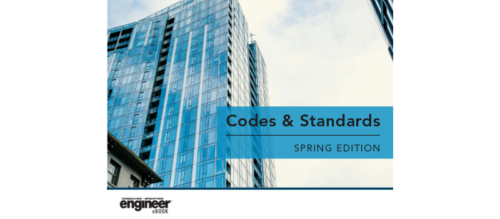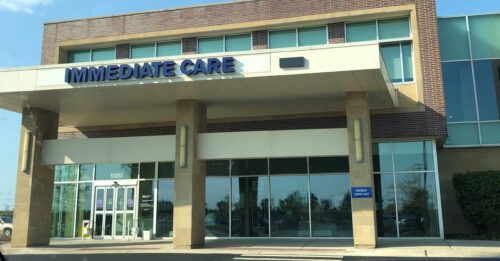Historic Gains in Energy Efficiency for New Homes and Commercial Buildings
Building officials from across the nation voted to support historic gains in the energy efficiency of building energy codes at the Final Action Hearings for the 2012 International Energy Conservation Code (IECC). As a result, the energy efficiency of America’s 2012 model energy code for new homes and commercial buildings will likely achieve the 30% boost sought by the U.S. Dept. of Energy, the U.S. Conference of Mayors, the National Assn. of State Energy Officials, Congress, and the broad-based Energy Efficient Codes Coalition (EECC).
The Institute for Market Transformation (IMT), the Washington, DC-based nonprofit dedicated to improving the energy efficiency of buildings, worked with the EECC to help promote the adoption of energy-efficient code proposals that are good for consumers, industry, and the nation’s energy future.
“This is a big deal!” said Cliff Majersik, Executive Director of IMT. “Most new buildings are built to the code — no better and no worse. These changes to the model energy code will slash pollution from power plants and furnaces while saving Americans billions of dollars in energy bills.”
IMT helped educate local officials in the Metropolitan Washington area on the 2012 IECC proposals and the benefits of energy-efficient building codes. More than 60 governmental voting member representatives from the DC area traveled down to Charlotte and took part in these hearings.
An Integrated, “Whole Building” Approach to Greater Efficiency in the Construction of New Homes and Commercial Buildings
Comprehensive proposals offered by the US Dept. of Energy, working with many other stakeholders, addressed all aspects of residential and commercial building construction. To meet the 30% goal in the residential code, voting delegates added a number of improvements from EECC’s comprehensive package, “The 30% Solution 2012” and other stakeholder proposals to DOE’s foundation. The resulting residential improvements will:
- Ensure that new homes are better sealed to reduce heating and cooling losses
- Improve the efficiency of windows and skylights,
- Increase insulation in ceilings, walls, and foundations,
- Reduce wasted energy from leaky heating and cooling ducts,
- Improve hot-water distribution systems to reduce wasted energy and water in piping, and
- Boost lighting efficiency
Commercial Gains Match Residential: The joint DOE/New Buildings Institute/American Institute of Architects package for new commercial buildings includes continuous air barriers and daylighting controls, increases the number of climate zones where economizers are required and offers designers and developers a choice of three paths to increase efficiency:
- Using renewable energy
- Incorporating more efficient HVAC equipment
- More efficient lighting systems
It also requires the commissioning of new buildings, integrally linking efficient building designs with lifelong building performance by applying a systematic approach to building quality assurance that monitors, identifies and makes corrections when energy savings aren’t living up to expectations.
Delegates also voted to eliminate the weaker Energy Chapter of the International Residential Code, supplanting it with the IECC and removing confusion and contradiction within the codes. The IECC is now the ICC’s only model energy code for residential and commercial buildings.
“In the 10 years I’ve been attending ICC code hearings, I have never seen a larger single stride taken for energy efficiency,” said Dick Meyer, Building Codes Program Director at IMT. “I am so proud to have played a role in this historic moment, which has so greatly improved the efficiency of our residential and commercial building codes.”
Efficient Codes Save Money for Owners and Occupants of Buildings
Studies show that by reducing monthly energy bills, efficiency improvements generate positive cash flow that rapidly recoups the cost of those improvements. A study by U.S. DOE’s National Renewable Energy Laboratory found that an average home that is 30% more energy-efficient returns $511 a year in energy savings to homeowners after the consideration of the capitalized cost of the efficiency improvements. In addition, because new buildings last for decades and are costly to retrofit, many of the efficiency improvements made today will benefit current and future home and building owners for generations to come.
“The average homeowner spends more than $2,000 a year on energy bills, more than what they pay for home insurance or property taxes,” said Caroline Keicher, Program Associate at IMT. “These are not theoretical savings. This is real money in the pockets of homeowners and a critical step toward making home ownership more affordable.”
From the national economic perspective, efficient buildings will demonstrably reduce US energy consumption, which will help stabilize the price of energy to businesses and manufacturers, defer the need for new power plant construction and, by reducing the demand for energy, improve national energy security.
What’s Next
State Adoption & Code Compliance. The 2012 IECC must now be implemented by states and localities, where code compliance activities are critical. According to a study led by IMT, each dollar spent on code compliance yields a six-fold payoff in energy savings, saving American consumers an eventual $10.2 billion annually.
The SAVE Act, a new proposal supported by energy efficiency advocates and leading U.S. homebuilders, seeks to factor energy cost savings into home mortgage underwriting and appraisal processes. This groundbreaking proposal would incentivize the construction and purchase of homes far beyond the energy efficiency levels called for in model codes.
Do you have experience and expertise with the topics mentioned in this content? You should consider contributing to our CFE Media editorial team and getting the recognition you and your company deserve. Click here to start this process.



